| Final Statistics: Alex & Maz | Total distance: 93,550km |
| Furthest Point: Rotorua, NZ | Now settled in Sydney, Australia |
| Final Statistics: Martin | Total distance: 79,698km |
| Furthest Point: Hobart, Australia | Now settled in Bristol, UK |
Tibet
|
| Arrive: | Tue 28th Feb 06 | Depart: | Tue 7th Mar 06 |
| Days: | 7 | Approx km: | 1000 |
| Capital: | Beijing | Currency: | Yuan (CNY) |
| Weekend: | Sat/Sun | Time Zone: | GMT +8 |
| Int. dial code: | +86 | Language: | Tibetan, Chinese |
| Visa Required: | Yes | Religion: | Buddhist |
| Side of road: | Right | Best time to visit: | Mar-Nov |
| Diesel Price: | US$ 0.43 | Activities: | Sightseeing, Trekking, Monasteries, Himalayas |
Click here to see our mission statement in Chinese.
Diary Entry: 28th Feb-7th Mar 2006 - The Roof of the World: A red flag stands where God once sat..
Photo Album for Tibet
Country Highlights En Route
Stunning scenery on the drive from Nepal:
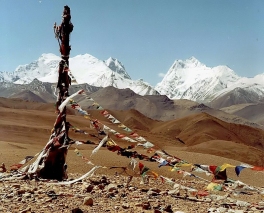 | 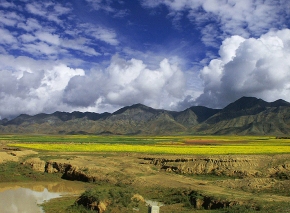 |
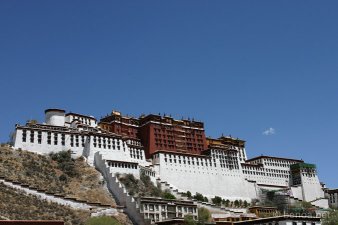 Potala Palace, Lhasa
Potala Palace, Lhasa
The Potala Palace, winter palace of the Dalai Lama since the 7th century, symbolizes Tibetan Buddhism and its central role in the traditional administration of Tibet. The complex, comprising the White and Red Palaces with their ancillary buildings, is built on Red Mountain in the centre of Lhasa Valley, at an altitude of 3,700m.
Drepung Monastery
About 8km west of central Lhasa is the Drepung (Zhebang Si), once world's largest monastery with a floor space of more than 200 000 square meters and about 10 000 monks. It was founded in 1416 by a disciple of Tsong Khapa and later enlarged by the Fifth Dalai Lama.
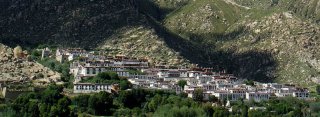 Namtso
Namtso
is one of the four holy lakes of Tibet, is located near Damxung. 4718 meters (15475 feet) above sea level and covering 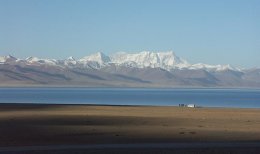 1900 square kilometers (735 square miles), the lake is the highest saltwater lake in the world and the second largest saltwater lake in China. The snow capped Mt. Nyainqentanglha, considered as the son of Namtso and leader of sacred mountains, soars up to sky beside her.
1900 square kilometers (735 square miles), the lake is the highest saltwater lake in the world and the second largest saltwater lake in China. The snow capped Mt. Nyainqentanglha, considered as the son of Namtso and leader of sacred mountains, soars up to sky beside her.
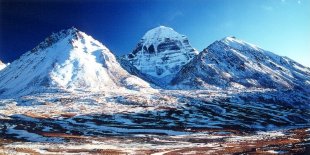 Mt. Kailash and Lake Manasarova
Mt. Kailash and Lake Manasarova
Lie in the region of Burang. They are symbolized as the "Sacred Mountain and Holy Lake" of the Buddhism, Hinduism and the indigenous religion - Bon. Mt. Kailash, named Gang Rimpoche in Tibetan, is the highest peak of Gangdise Mountain, with an altitude of 6638 meters (2177 feet). Like a huge diamond, the peak is centered among peaks that resemble an eight-petal lotus. Between the two sacred peaks are Lake Manasarova and Lake Rakshastal (La'nga Tso), which are called Holy Lake and Ghost Lake respectively.
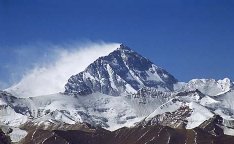 Mount Everest
Mount Everest
Mount Everest is the highest mountain in the world. Its elevation of 29,035 feet (8,850 meters) was determined using GPS satellite equipment on May 5, 1999. The first seven attempts on Everest, starting with a reconnaissance in 1921, approached the mountain from Tibet, where a route to the summit via the North Col and North Ridge seemed possible. All were unsuccessful. George Mallory, who spearheaded the first three expeditions, lost his life with Andrew Irvine during a failed ascent in 1924. 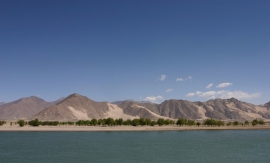 Unsuccessful attempts continued through 1938, then halted during World War II. By the war's end, Tibet had closed its borders, and Nepal, previously inaccessible, had done the opposite. Starting in 1951, expeditions from Nepal grew closer and closer to the summit, via the Khumbu Icefall, the Western Cwm, over the Geneva Spur to the South Col, and up the Southeast Ridge. In 1953 Edmund Hillary and Tenzing Norgay reached the summit.
Unsuccessful attempts continued through 1938, then halted during World War II. By the war's end, Tibet had closed its borders, and Nepal, previously inaccessible, had done the opposite. Starting in 1951, expeditions from Nepal grew closer and closer to the summit, via the Khumbu Icefall, the Western Cwm, over the Geneva Spur to the South Col, and up the Southeast Ridge. In 1953 Edmund Hillary and Tenzing Norgay reached the summit.
Yamdroktso Lake
Another holy lake in Tibet, and legend has it that if the lake ever disappears, it will mark the end of Tibet. 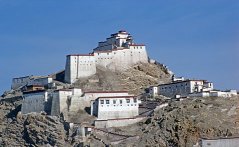 The Turquoise Lake, as it is known for its beautiful color, is a non-renewable water source, and it serves as a habitat for many animals, such as the rare Black-Necked Cranes.
The Turquoise Lake, as it is known for its beautiful color, is a non-renewable water source, and it serves as a habitat for many animals, such as the rare Black-Necked Cranes.
Gyantse Dzong
Dzong is Tibetan for Mountain fortress. This fort was the seat of the temporal leaders of Gyantse. It was partly destroyed by the British "invasion" of Tibet in 1904 (the Younghusband Expedition). From the top of the hill one can appreciate the richness of the Gyantse valley.
| All content copyright � overland-underwater.com - please do not use without permission. |
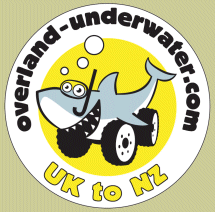

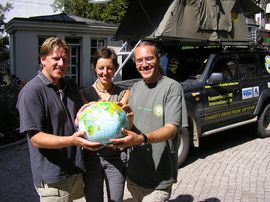
 Tibet
Tibet 

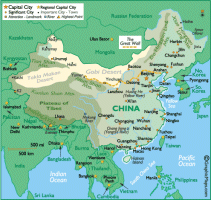


 Previous: Nepal
Previous: Nepal

